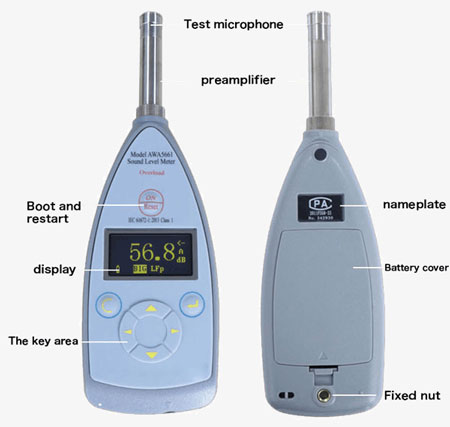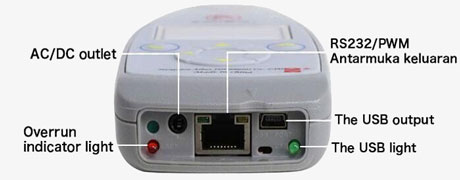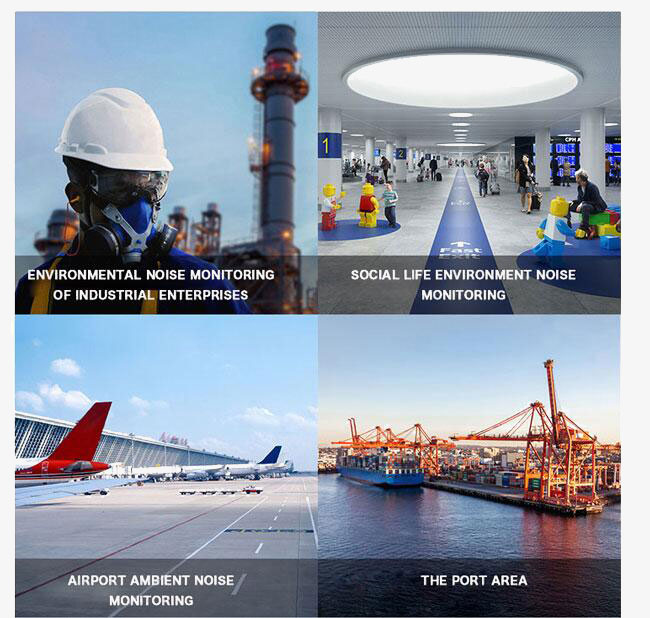Precision digital sound level meter with RS-232 digital output interface for remote measurement, measuring range 17 to 132dB, suitable for noise levels in factories, buildings and other working environments.

Digital Signal Processing Technology
- The sound decibel meter meets Class 1 standards.
- Advanced digital detection technology, good stability and wide dynamic range.

Overload indication function
- Overload indication, over the measurement range automatically prompt, a digital sound level meter is not damaged.
- Single range, wide dynamic range, no need to switch, simple and convenient operation.
Applications
The digital sound level meter can be widely used in various machines, vehicles, ships, electrical appliances and other industrial noise measurement and environmental noise measurement, suitable for factory enterprises, architectural design, environmental protection, labor and health, transportation, teaching, medical and health, scientific research and other departments of the sound test field.

| Model | SISCO-AWA-5661-1B |
| Microphone Model | AWA14411 |
| Measuring Range | 17 dB(A)~132 dB(A) |
| Spontaneous Noise | <10 dB(A) |
| Frequency Range | 10 Hz~20 kHz |
| Frequency Weighting | Parallel (simultaneous) A, C, Z for each channel |
| Time Weighting | Parallel (simultaneous) F, S, I, Peak for each channel |
| Monitor | 128×64 LED dot matrix |
| Output Interface | AC, DC, RS232, PWM |
| Points Function | No |
| Main Measurement Index | Lp, Lmax, Lpeak |
| Overrun Indication | The limit can be set |
| Data Storage Function | No |
| Recording Function | No |
| Statistical Analysis Function | No |
| Power Supply | 4 (7#) alkaline batteries, can work continuously for more than 6 hours |
| Dimension | 190mm x 68mm x 27mm |
| Weight | 1.5 kg |
| Operating Temperature | -10 ℃~50 ℃ |
| Warranty | 12 Months |
Q1: What is a noise detector?
A1: Noise tester is an instrument used for noise detection and testing in public places such as work sites and squares. Factory noise monitoring Noise pollution is one of the environmental pollutions that have a greater impact. Higher decibel noise can even cause serious damage to people's eardrums and cause deafness. The application of the noise tester can provide the decibel that the noise reaches in order to take relevant measures to control and reduce the noise. The measurement unit of the sound level is decibels. The professional noise tester has a highly sensitive sensor, high accuracy, and a wide range of applications. It can be widely used for noise measurement in various environments. Sound level measuring instrument, collectively referred to as sound level meter.
Q2: Sound level meter working principle
A2: The sound level meter uses a microphone to convert the sound into an electrical signal, and then a preamplifier converts the impedance to match the microphone with the attenuator. The amplifier adds the output signal to the weighting network, performs frequency weighting on the signal (or an external filter), and then amplifies the signal to a certain amplitude through the attenuator and amplifier, and sends it to the effective value detector (or external press Level recorder), give the value of the noise level on the indicator head.
Q3: How big is the decibel scale?
A3: Sound is measured in decibels (dB). Whispering is about 30 decibels, normal conversation is about 60 decibels, and motorcycle engines run at about 95 decibels. Noise above 70 decibels for long periods of time may begin to damage your hearing. Loud noises above 120 dB can cause immediate damage to your ears.
Tips: What is the reason for the poor sound response of the burst sound level meter?
The sounds response of the burst sound level meter is caused by improper testing. For example, if the indication value does not drop during slow weighting and the test is started, the LASmax value will be too high. It is recommended to wait for 10s to restart the test.
Thank you for buying industrial test and measurement equipment on SISCO.com, all products sold by SISCO and the partner cover a 12 months warranty, effective from the date of receiving the products.
What is covered?
SISCO is responsible for providing free spare parts, and free technical support to assist the customer to repair the defective products until the problem is solved.
What is not covered?
- Product purchased from anyone other than a SISCO store or a SISCO authorized reseller.
- Expendable parts.
- Routine cleaning or normal cosmetic and mechanical wear.
- Damage from misuse, abuse or neglect.
- Damage from use of parts other than SISCO approved.
- Damage from use outside the product’s usage or storage parameters.
- Damage from use of parts not sold by SISCO.
- Damage from modification or incorporation into other products.
- Damage from repair or replacement of warranted parts by a service provider other than a SISCO authorized service provider.
- Damage caused by the application environment not meeting the product usage requirements and the failure to perform preventive maintenance.

